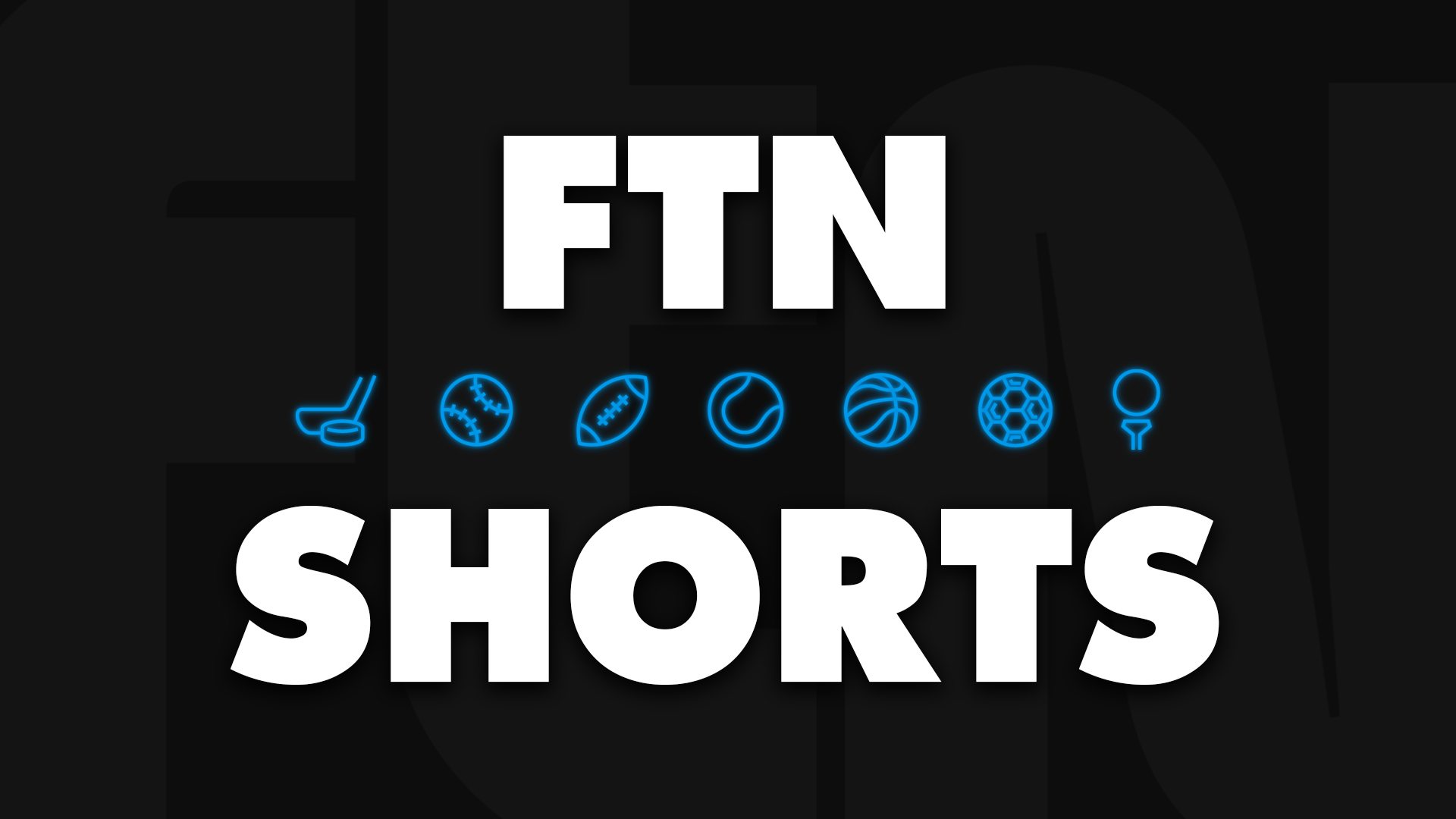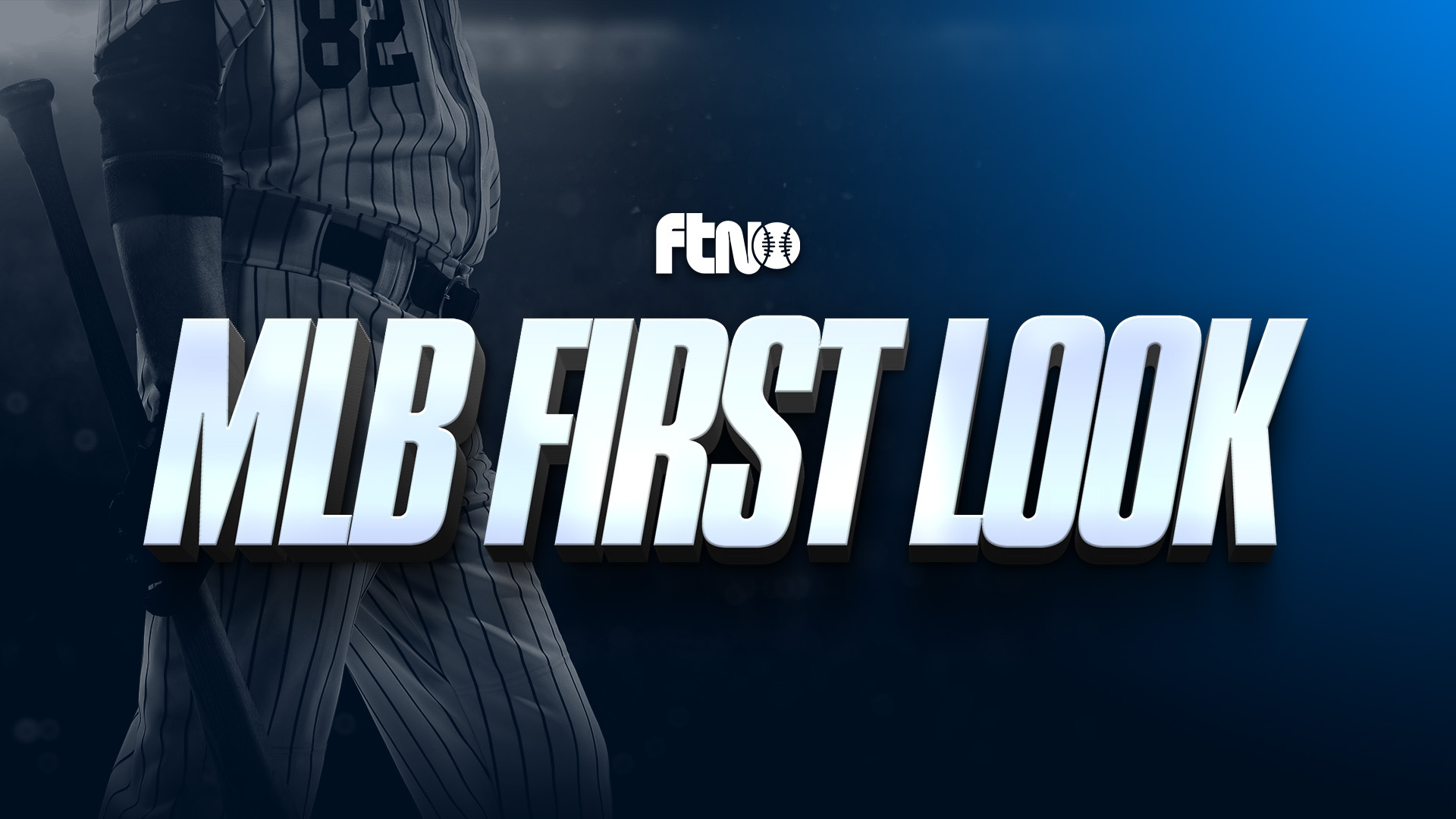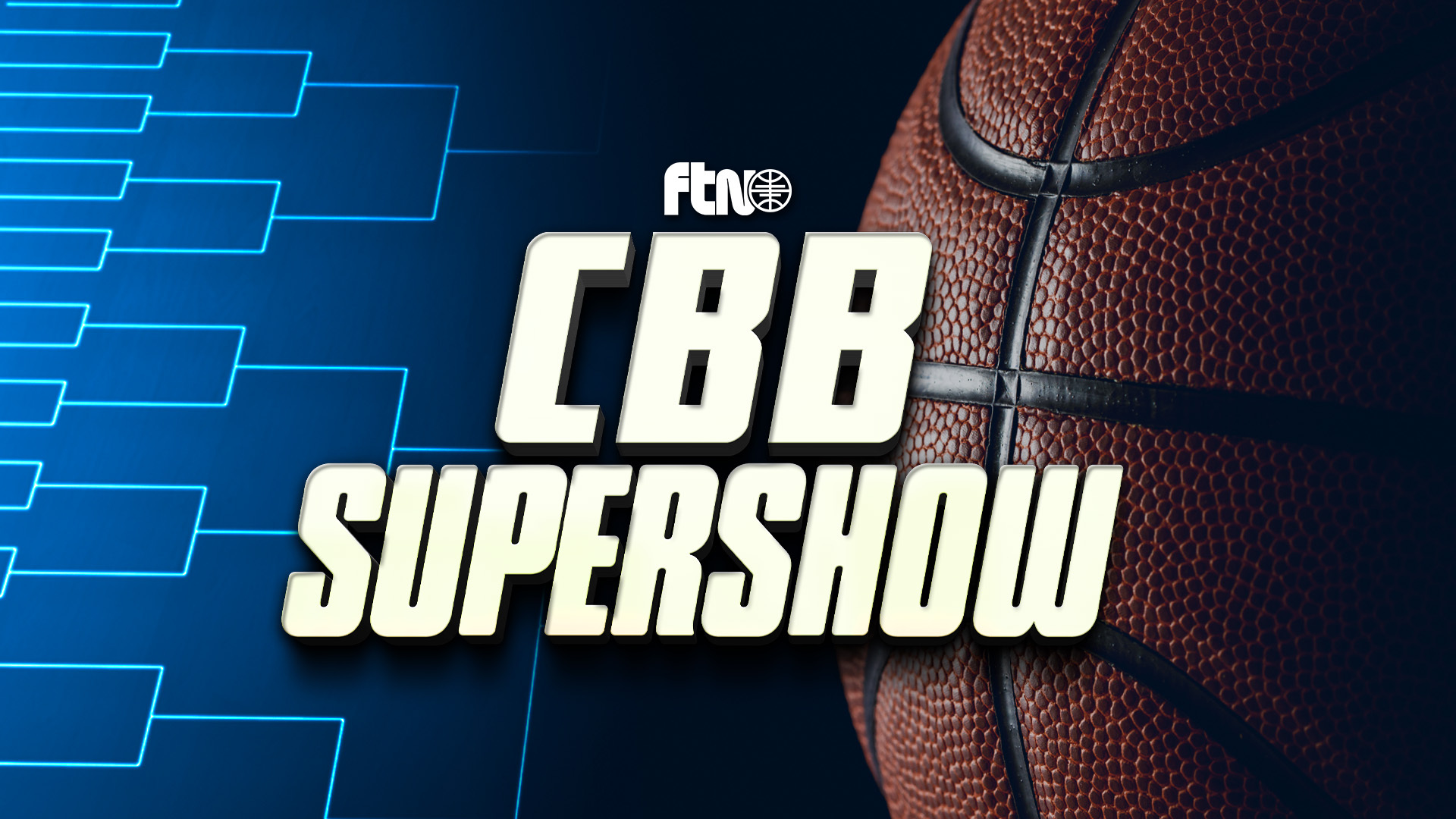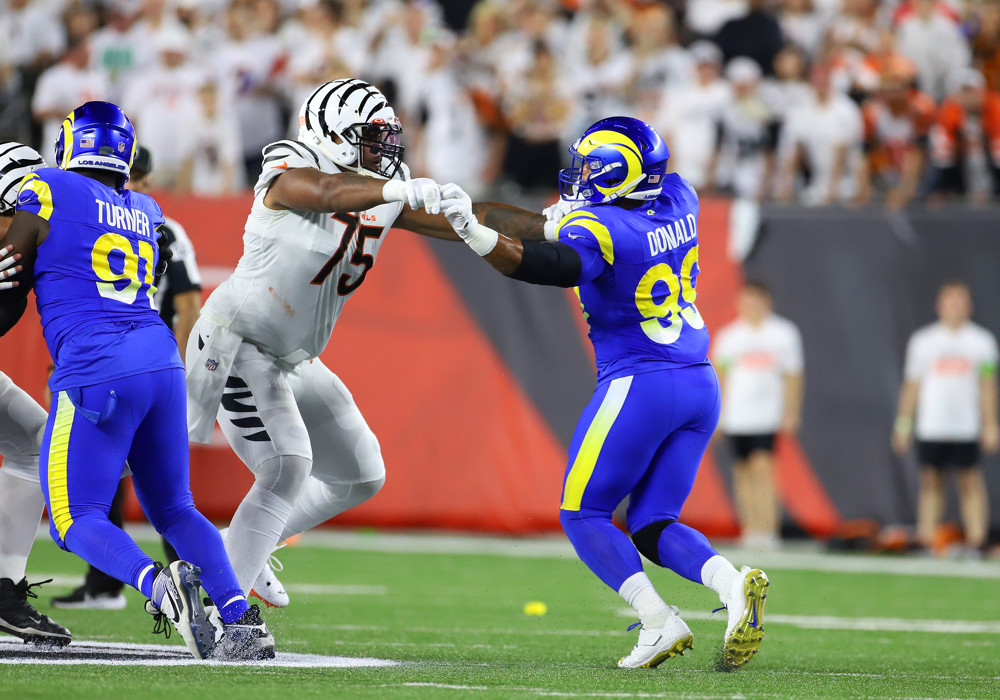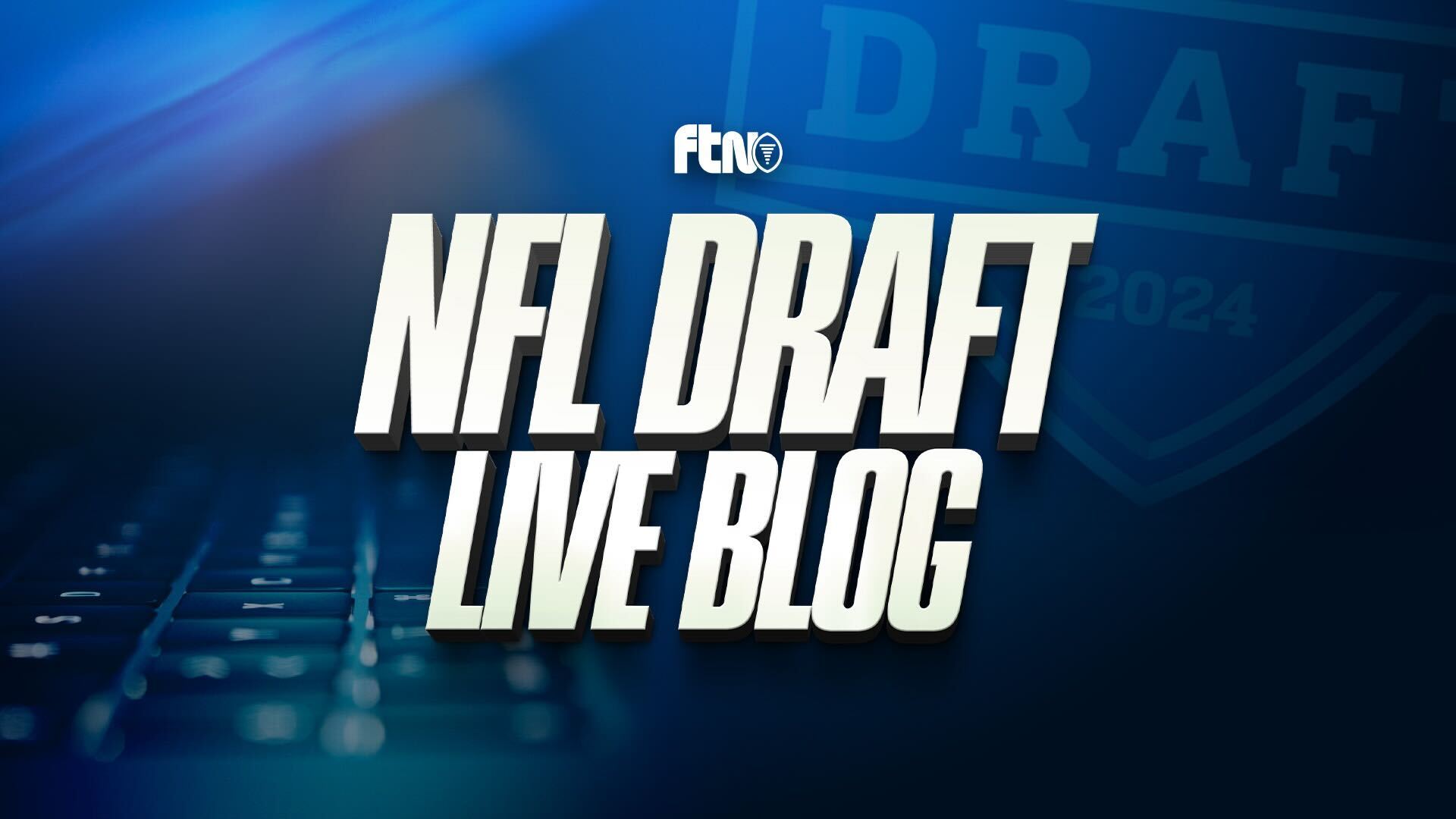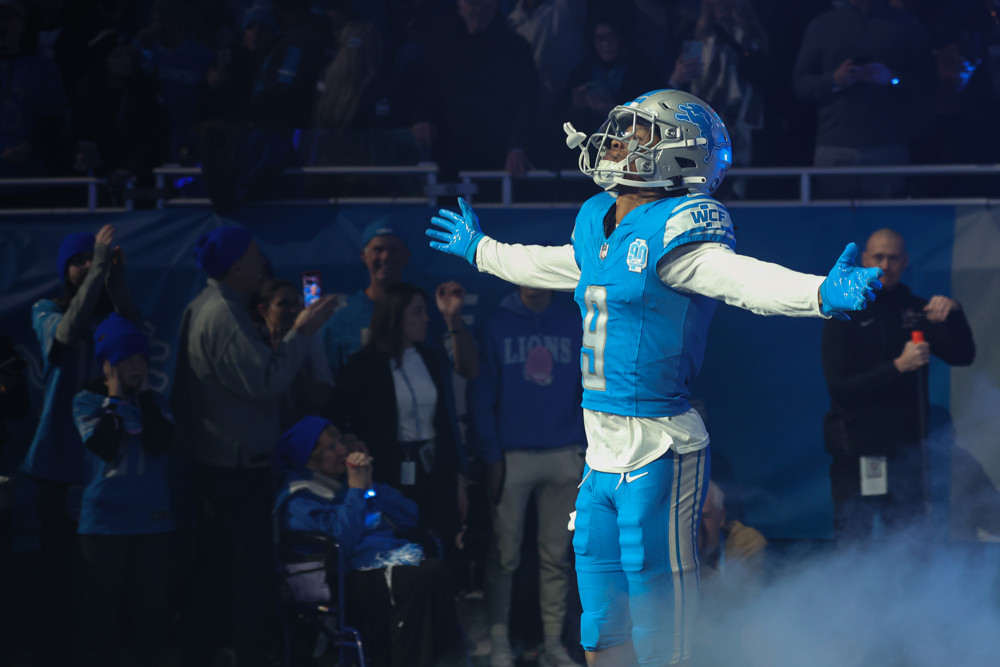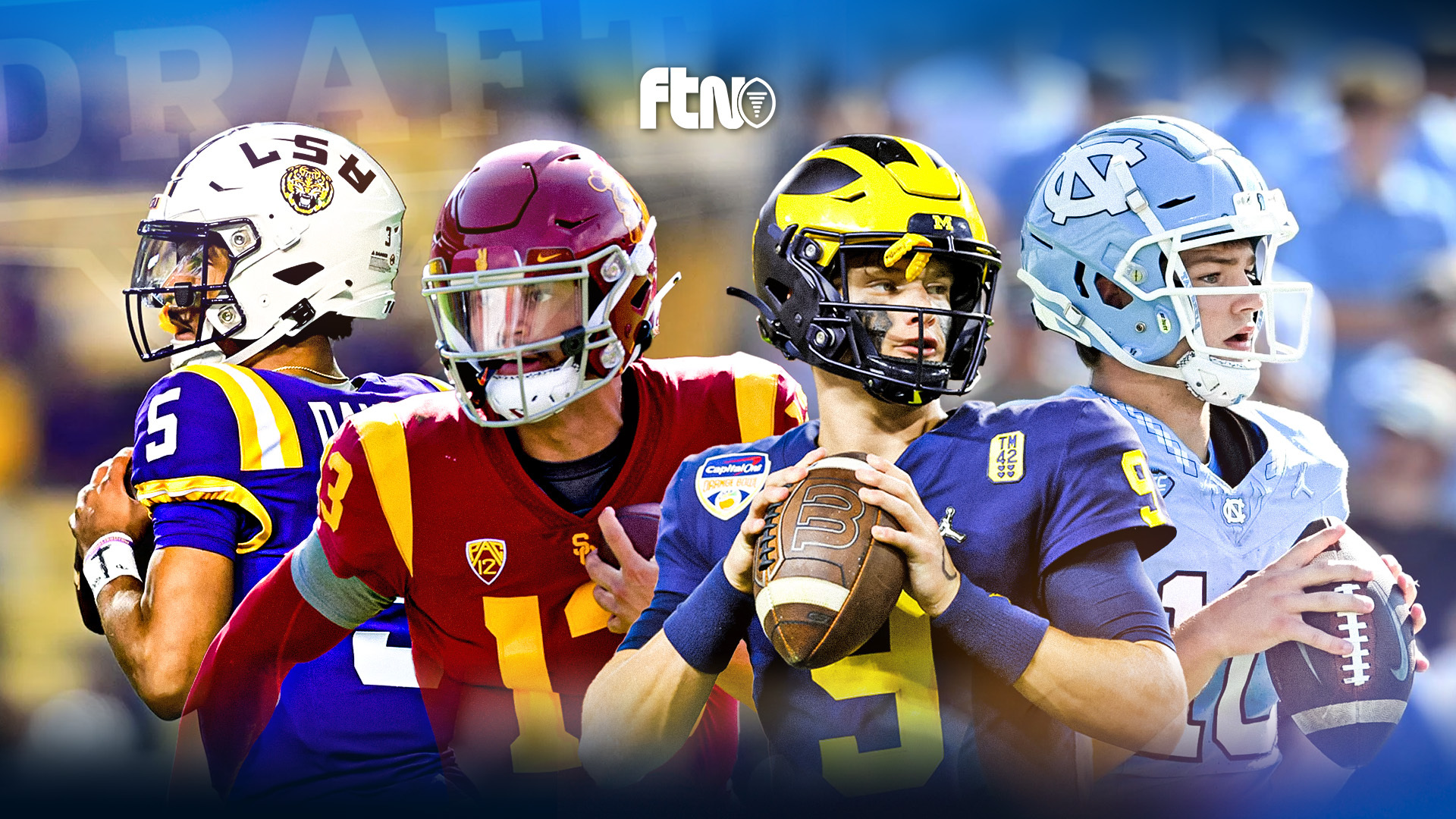
The 2024 NFL Combine may have lost some appeal when presumed top picks Caleb Williams, Jayden Daniels, Marvin Harrison Jr. and Malik Nabers decided to skip the drills. But a fantasy manager shouldn’t sweat the missing star power. Historically, the Combine has made the biggest draft differences among the less heralded players and drills.
I covered that in great detail in 2023. And this year, I have identified a player performance to watch for each of the major measurements and drills. The prospects who hit those benchmarks may offer the greatest potential to beat their fantasy expectations.
40-Yard Dash
Jaylen Wright, RB, Tennessee
Target: 4.40 seconds
Traditionally, I’ve cared less about running back 40 times than wide receiver 40 times. Relative to their receiver foils, NFL backs see a smaller percentage of their offensive opportunities reach the open field, where elite speed can be the difference between a touchdown and a tackle. Running backs more often lean on their vision, quickness and power to find the right holes, break tackles and push the pile. And I believe that reality informs the similarity of the Round 1 and 2 running back 40 distributions — apart from the outlier freak athletes like Chris Johnson (4.24 seconds) and C.J. Spiller (4.27).
But recent seasons have me rethinking that indifference. Not only has the NFL evolved toward committees of backs with specialized skill sets, teams have also proliferated Kyle Shanahan’s wide zone offensive scheme that requires its backs to have the speed to outrace defenders to the edge and turn the corner, which stretches defenses horizontally and creates space for receivers to gain yards after the catch. The 2023 class medalist De’Von Achane (4.32 seconds) exemplified that trend and turned fewer than 10 carries per game into three breakaway touchdowns and the fourth-highest average fantasy points per game. But the three fastest 40 rookies Achane, Jahmyr Gibbs (4.36) and Keaton Mitchell (4.37) finished top three in explosive run rate among all running backs in 2023 and outproduced their real and fantasy draft positions and the expectations for backs with their relatively modest workloads.
Jaylen Wright is my best bet to follow that trio’s example. The Tennessee product may not see as frequent of an “undersized” label as a more heralded prospect like Bucky Irving or a back with a “1” in front of his weight. But Wright’s unofficial 5-foot-11 and 200-pound frame nets a 27.9 body mass index that is well below the typical standard of 29.0-31.0 for featured NFL backs. He will likely play in a committee at the next level. And presumably without the power to lead his committee in red zone carries, Wright will likely need an above average explosive touchdown rate to clear the fantasy flex benchmark. I will like his chances a lot more to make that happen if he runs a sub-4.4-second 40.
Speed Score
Trey Benson, RB, Florida State
Target: 110.0 Speed Score
At 6-foot-1 and 223 pounds, Trey Benson is unlikely to face the workload concerns of the thinner Jaylen Wright. But the Florida State product is also unlikely to match last year’s top running back pick Bijan Robinson with a 4.46-second 40 time, never mind a sub-4.4-second time. With all the attention on that specific drill, you may be tempted to place Benson’s professional ceiling as a power back committee member. But the reality is that size and speed combine to create explosiveness, and bigger backs have a lesser 40 benchmark to clear to earn a Day 1 draft selection. Speed Score balances those factors in one metric, and the majority of recent bell-cow NFL backs — like Jonathan Taylor (119.0), Derrick Henry (118.4), Breece Hall (116.9), Ezekiel Elliott (116.3), J.K. Dobbins (115.2), Kenneth Walker (114.7), Joe Mixon (112.2) and Leonard Fournette (110.2) — have cleared a score of 110.0 or — like Bijan Robinson (108.7) last year — come close. Because of his long strides, Benson is faster than he looks on film. And if he can run a 4.48-second 40 time, then he will hit the 110.0 Speed Score benchmark and unlock a chance of a higher-than-expected late-first- or early-second-round draft selection and featured role in his rookie season.
20-Yard Shuttle
Audric Estime, RB, Notre Dame
Target: 4.40 seconds
Audric Estime shows the power you would expect of a 227-pound prospect. But I suspect he owed a healthy share of his 31% junior broken tackle rate to his surprising quickness and cutting skills for a back of his size. Estime can prove those skills in the short shuttle drill. The participating Round 1 and 2 running backs have almost always cleared the 4.4-second shuttle standard — even the power backs. Zach Charbonnet entered last year’s draft at a similar size, with a similar college broken tackle profile, and with similar concerns for his elusiveness, and he parlayed a 4.46 Pro Day shuttle time into a late-2nd-round draft pick and 141 rookie touches. Estime may need to improve on that standard to earn a fantasy-relevant rookie workload. But even a 4.4-second shuttle time could make that difference since Estime has obvious red zone potential and since that shuttle time would tease the skill set to contribute many more than his 26 catches the last two seasons at Notre Dame.
Three-Cone Drill
Keon Coleman, WR, Florida State
Target: 7.10 seconds
Keon Coleman has every touchdown-scoring trait a fantasy player could want. He elevates for contested catches with his 6-foot-4 frame, beats press with his 215-pound size, and racks up yards after the catch with his with his top-end speed. But at Florida State, that speed tended to show in straight lines, even on punt returns. Unless he’s the next DK Metcalf, Coleman will need to cultivate the lateral agility to run a star outside receiver’s fuller route tree and create the consistent separation that his less flattering comps like Kelvin Benjamin never could. And Coleman will have his best chance to demonstrate that potential in the three-cone drill, where a 7.1-second or better time would clear the threshold of a typical first-round receiver pick and would distance him from the Benjamin (7.33 seconds) types.

Bench Press
Braelon Allen, RB, Wisconsin
Target: 28 reps
Recent NFL trends suggest the 6-foot-2, 245-pound Braelon Allen is more likely to see a power committee role like AJ Dillon has in Green Bay than a center-of-the-offense role like Derrick Henry has in Tennessee, especially if Allen runs for modest 40, shuttle, and three-cone times as scouts expect. But Allen could tease a higher ceiling with an outlier total of 28 or more bench reps. There isn’t a clean relationship between running back bench reps and draft round, but Nick Chubb (29 bench reps) offers an example of a prospect whose power unlocked an unexpected explosiveness for a player with 4.52-second speed. It is asking a lot for Allen to match maybe the best running back in the NFL. But Allen will likely need that work between the 20s to clear the fantasy flex standard. The Wisconsin product should score a healthy total of red zone touchdowns. But he had just 49 catches in 35 college games and seems unlikely to match that total in his best professional season.
Vertical Jump
Rome Odunze, WR, Washington
Target: 36.0 inches
He may not match the perceived top two receiver prospects Marvin Harrison and Malik Nabers — neither of whom plans to participate in combine drills — in explosiveness. But Rome Odunze nearly matched his likely Round 1 classmates with 13 touchdowns in 2023 thanks in part to his exceptional contested catch skills. The Washington product has the 6-foot-3 and 215-pound frame to translate that jump-ball success to the next level. But Odunze would ease the presumedly minor concerns that teams could have for his non-special speed and quickness if he matched his tape with an interquartile Round 1 vertical jump of 36 or more inches. Alshon Jeffery and Courtland Sutton had similar builds and speed concerns and jumped within half an inch of that standard in their draft years, and they both produced 10-touchdown peak seasons. Odunze could follow their examples with a similar jump.
Broad Jump
Johnny Wilson, WR, Florida State
Target: 123 inches
Florida State teammate Keon Coleman may win jump balls with his leaping ability, but Johnny Wilson can win them with just his 6-foot-7 height. I don’t think that’s a bad thing. But it makes Wilson a unique prospect, and that will make it difficult to judge the bulk of his Combine performances. Would a 4.6-second 40 be bad? Would a 4.5-second short shuttle? I have no idea. And I think that moves my attention to his broad jump performance.
Broad jump does not have an intuitive skills connection the way the 40 measures top-end speed and the bench press measures power. But the broad jump seems to capture general athletic ability, and it sees a steady and visible decline from a 124-inch median in Round 1 to 123- and 122-inch medians in Rounds 2 and later for wide receivers. If Wilson can meet that second-round standard, I’ll feel a lot better about his chances to translate to the NFL. Calvin Johnson (139 inches), Vincent Jackson (129), Chase Claypool (126) and Mike Williams (123) are the notable early-round tall receivers that did, and they paint a more promising picture of Wilson’s pro potential than their foils that didn’t like Devin Funchess (122), Dorial Green-Beckham (119) and Kelvin Benjamin (117).
Body Mass Index
Bucky Irving, RB, Oregon
Target: 29.0 BMI
Bucky Irving’s unofficial 195-pound frame seems too small to handle a featured NFL workload. But 195 pounds means very different things for a 5-foot-11 player like Joe McKnight and a 5-foot-8 player like Ray Rice. At an unofficial 5-foot-10, Irving looks more like the former than the latter. But Jahmyr Gibbs entered last Combine at a listed 5-foot-11 and 199 pounds, measured at 5-foot-9, and went on to survive 234 rookie touches with just a brief absence for a minor hamstring injury. You shouldn’t draw too firm a conclusion from one player in one season. But that two-inch difference teased its importance in body mass index, which elevated Gibbs from C.J. Spiller and Jamaal Charles to DeMarco Murray and Todd Gurley size comps. With his unofficial height and weight, Irving size comps to Reggie Bush and LeSean McCoy. But if he measures at even one inch less, he would size comp to Melvin Gordon and Rachaad White, and the Oregon product would dramatically improve his chances for a fantasy-friendly 200-touch rookie season






